Because he didn’t want to give up his daily soup ritual, Peter Koch started making his own miso. His mother had once attended the cooking class of a Japanese Zen master during a guest appearance in the Black Forest. Since then, the Kochs have been serving homemade miso. When his mother stopped producing it for his own use, Peter Koch had no choice – he did not want to and could not do without his daily miso soup ritual. After all, the Zen paste brings him stable health and new drive every day. So he says goodbye to his job in the automotive industry and turns to the “Aspergillus Flavus var Orizae”. A koji fungus that likes to grow on rice. Its enzymes break down proteins, fats, starch and even the color of soybeans, producing glutamate. The result is a spicy miso paste bursting with umami.
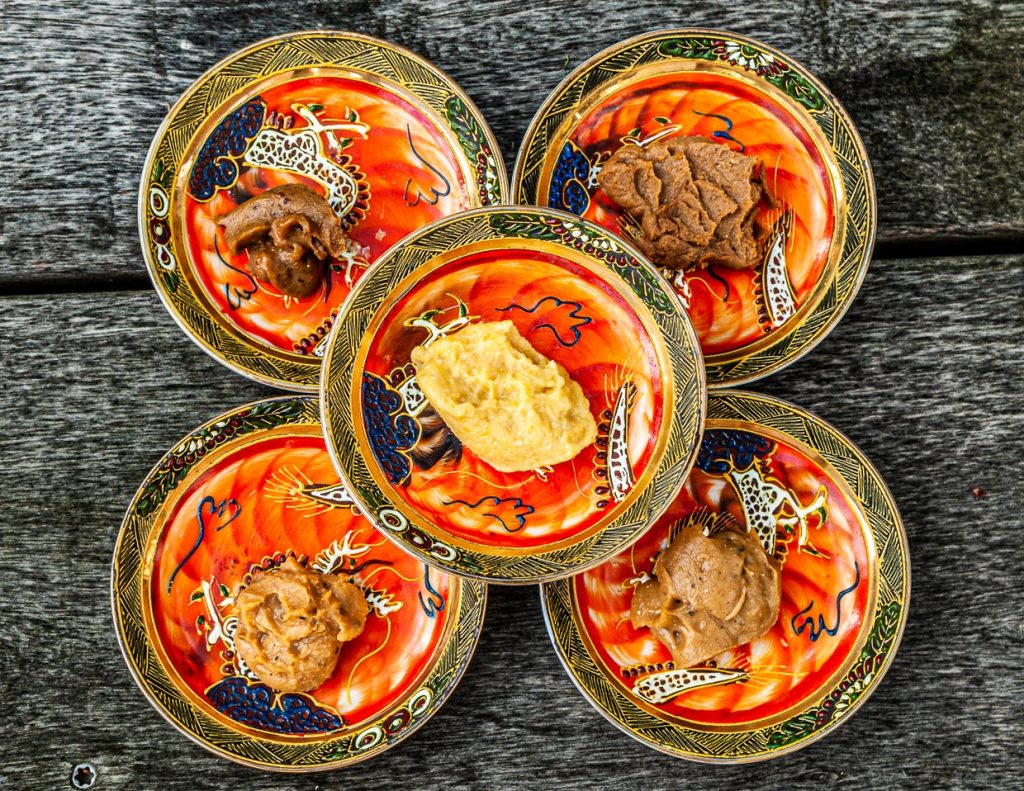
Taste wonders for star cuisine and home use
In turn, the variety is created by varying the ingredients, the pre- or post-seasoning, the duration of fermentation and also the temperature over the course of the year. Peter Koch spent five years experimenting with the koji mushroom, rice and various grains. To do this, he traveled to Japan, visited miso masters and had them show him the traditional Japanese production process. This was in 2013, but it is only since 2017 that Koch has been able to make a living from his Black Forest miso.
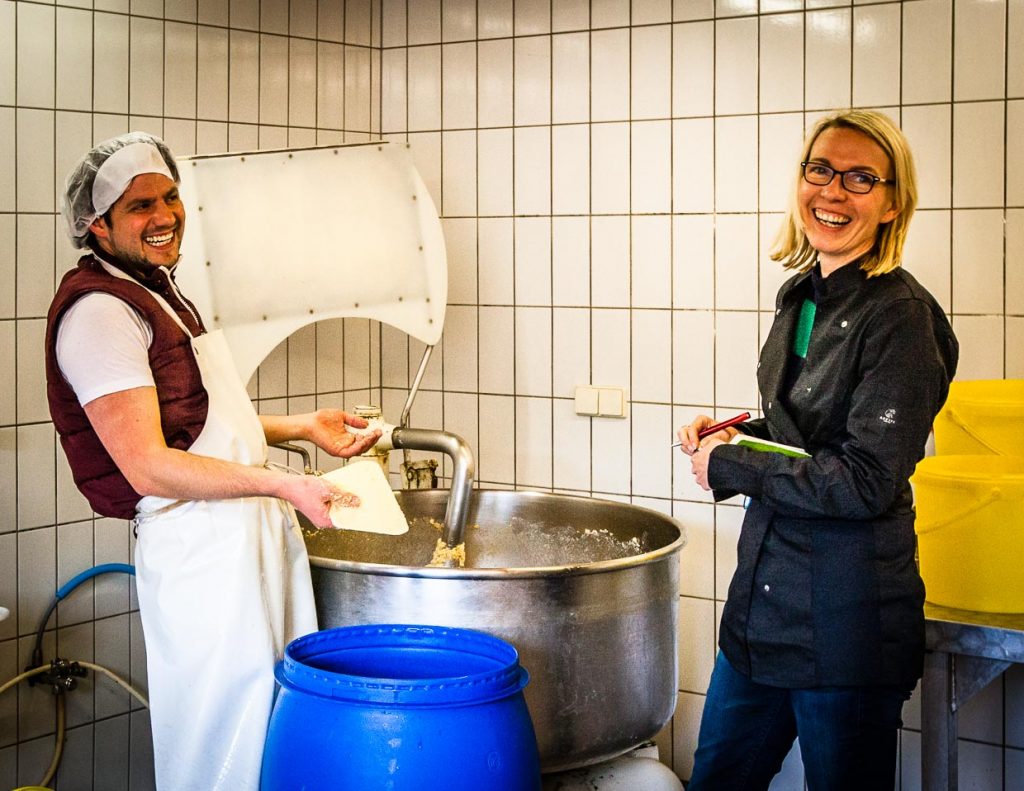
Visit to the miso maker
We enter the production facility of Schwarzwald-Miso in the small village of Geisingen. A pleasant spiciness is in the air. Our gaze wanders over countless blue plastic barrels. Not a very picturesque sight. But as is so often the case, it’s the contents that count. And Peter Koch makes it according to a basic Japanese recipe, but with mainly regional organic ingredients. Miso basically consists of soy, grain and sea salt. The koji fungus, a noble mold that grows with preference on rice, is added as a fermentation culture.
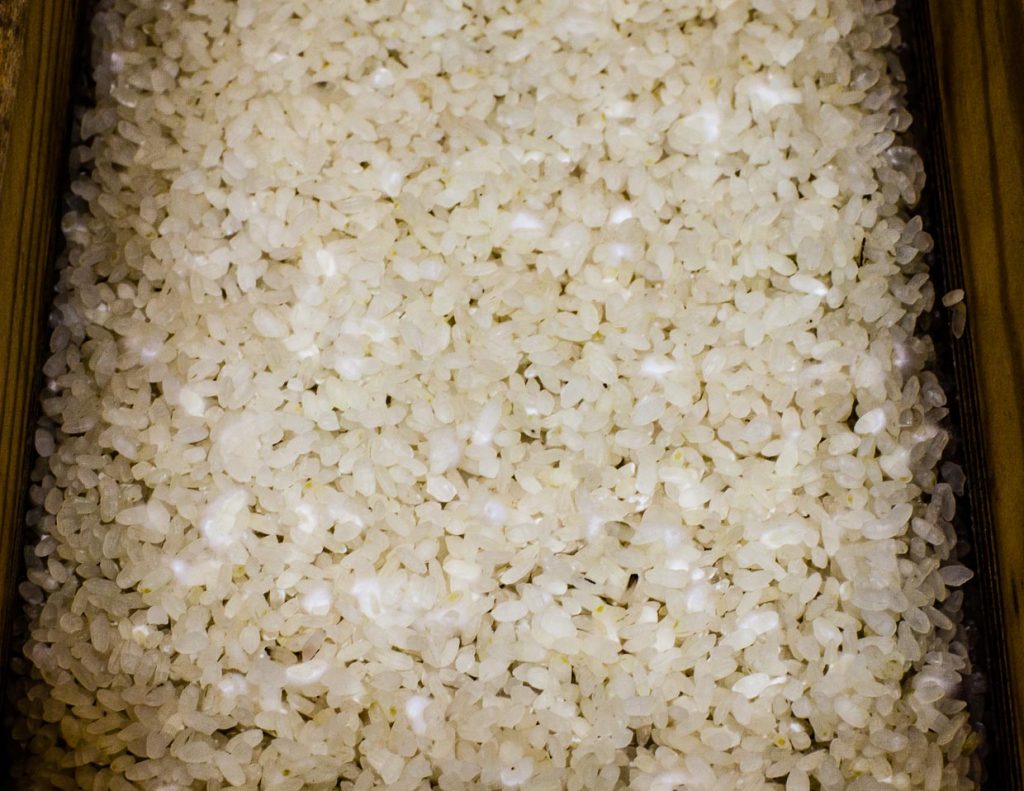
It is the basis for the Japanese spice paste. The rice is cooked so that the fungus can also penetrate the rice. The fungus then begins to convert the starch into sugar. Soy and rice are broken down into their individual components by Aspergillus Orizae. In chemical analysis, this performance means a breakdown into 20 different amino acids as well as the breakdown of zinc and selenium. In other words, a lot of nutrients that are good for the body. Miso is more than just a spice paste, it is the energy drink of the Japanese and always worth emphasizing, also the source of taste.
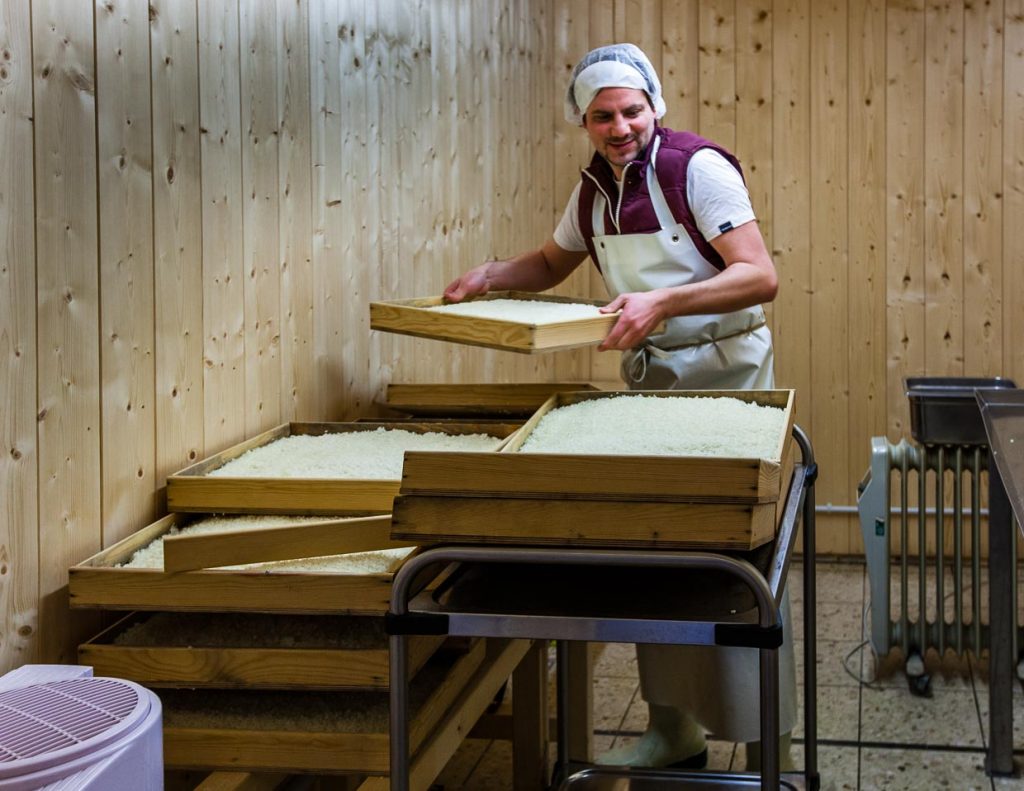
Wait and sip miso soup
Once the miso has been mixed and poured into the barrel, nothing can really go wrong. Then it’s just a matter of waiting, six months, twelve months or longer. The salt content in miso is 10 percent. Too inhospitable for germs or unwanted mold. The koji mushroom breaks everything down, and what’s left is a sometimes lighter, sometimes darker paste. A tasty source of fiber with plenty of protein and vitamins. But until the time of waiting begins, work must be done neatly and cleanly.
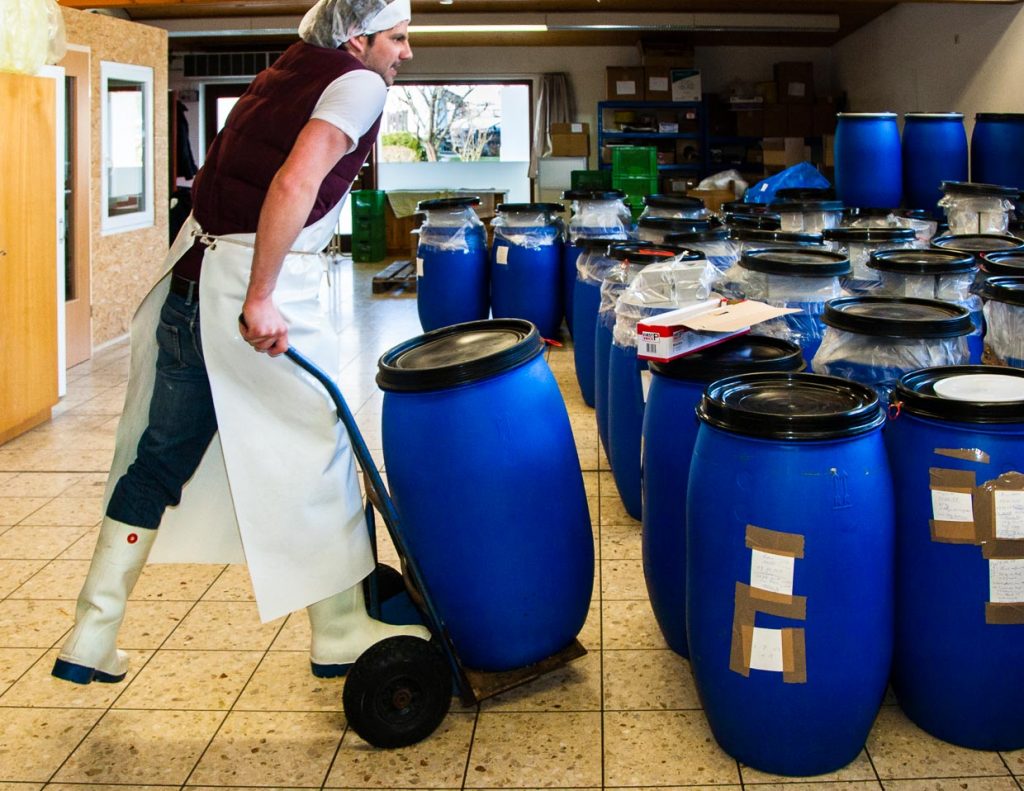
Barrel fermentation through the seasons
Peter Koch got the theory and the knowledge in Japan. The ingredients from organic farming mostly come from the immediate vicinity. The soybeans, for example, come from the Stürzle farm and the white lupins from Wertheim. The rice is still from the EU and comes from the Po Valley, and the sea salt comes from Portugal.
The production process begins with the rice on which the noble fermentation culture is to grow. Peter Koch cooks the rice and then takes it to the warm, humid sauna at a temperature slightly below 40 degrees. There, the koji fungus feels really at home and begins to cover the rice grains with a sweet-smelling fluff.
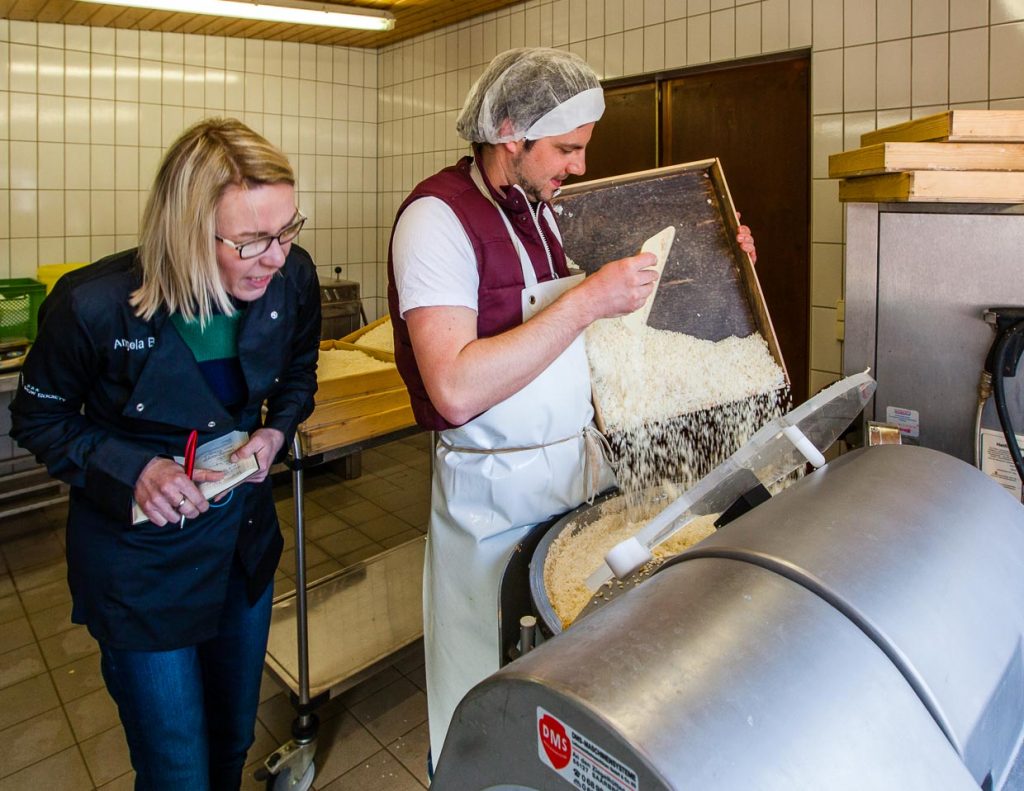
In the cutter, the rice covered with the precious fungus and the cooked soybeans are crushed and mixed to a pulp. When cooked, 30 kg of soybeans become 60 kg, plus 10 kg of sea salt. Peter Koch also adds the salt to the cutter so that it is evenly distributed.
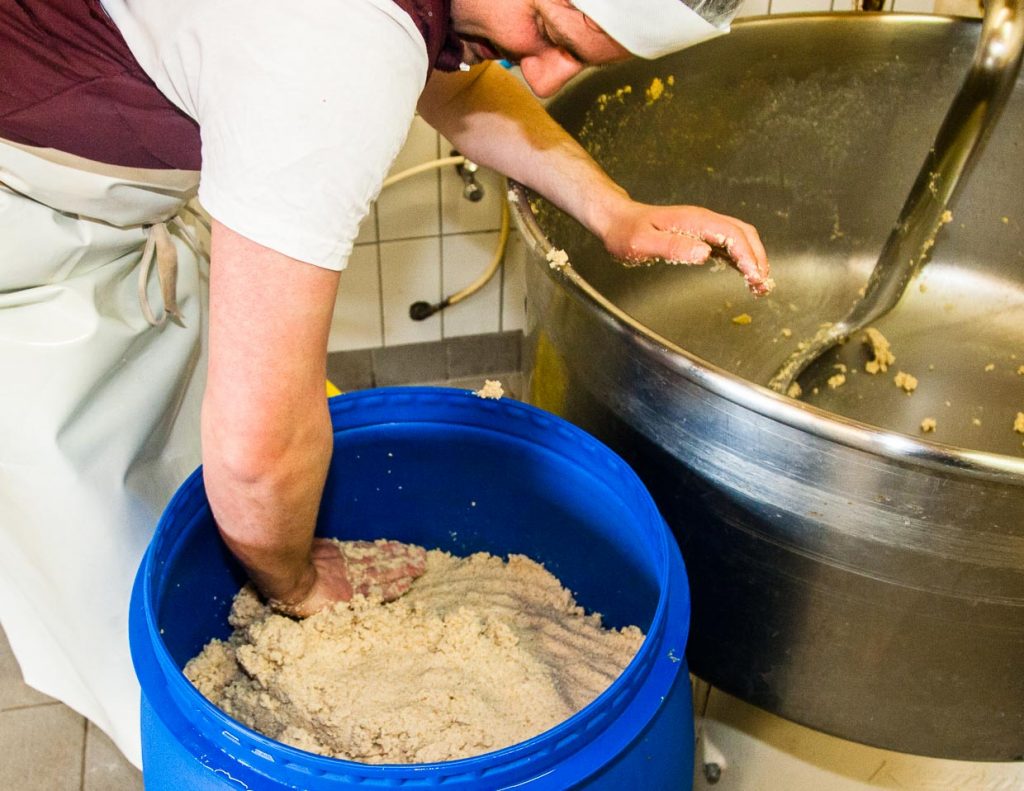
It is only in the kneading machine that the respective grain, whether soy, barley or lupins, is mixed with the rice and salt to form a homogeneous paste. This is then thrown by Peter Koch, one cannot use a better term for this movement, with “Schmackes” into a barrel. Dough ladle after dough ladle he throws into the container. The idea is to create as few voids as possible in the miso mixture. Once the barrel is full, it is pressed down by hand and salt is sprinkled on top to protect it from bacteria. a foil is placed over the miso mass and everything is weighted down with 30 kg of stones.
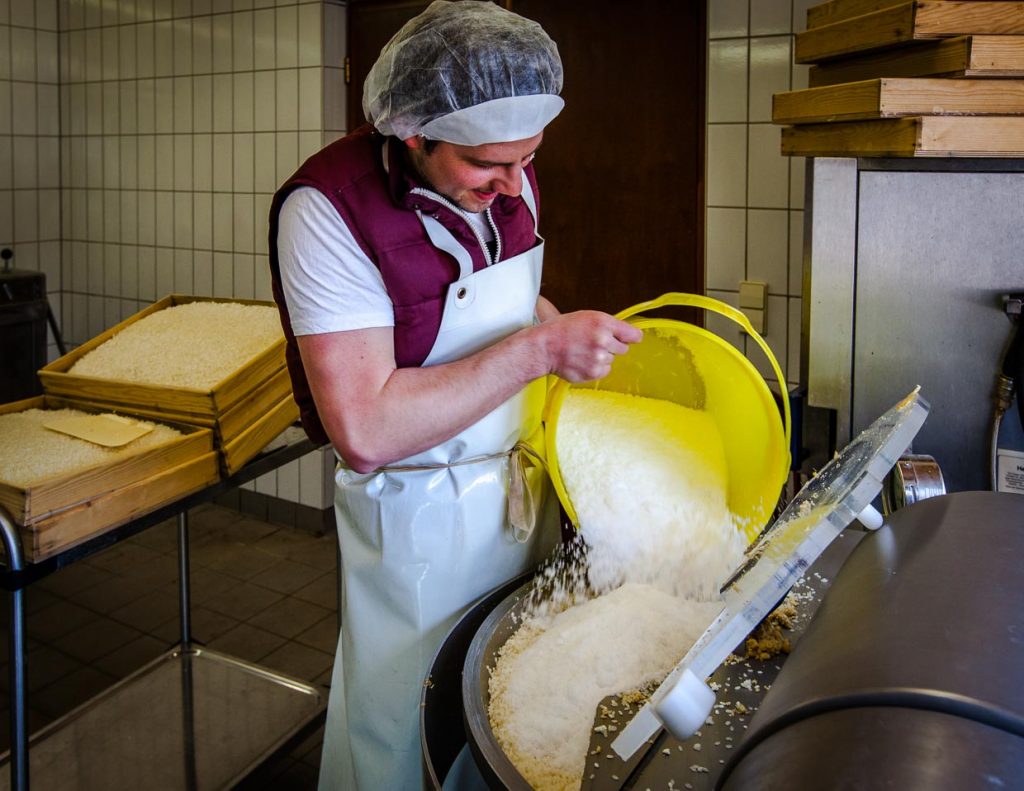
No two miso are alike. Each batch that Peter Koch makes is different from the previous one. This is because the general conditions, such as room temperature and humidity, also play a role. Like all natural products, miso covers a certain spectrum of tastes. Schwarzwald miso serves several food trends at once. It is vegan, made from organic ingredients, makes food easier to digest, and comes from the region or at least from Europe. In principle, miso has an unlimited shelf life. It is a natural food that can easily be incorporated into everyday cooking.
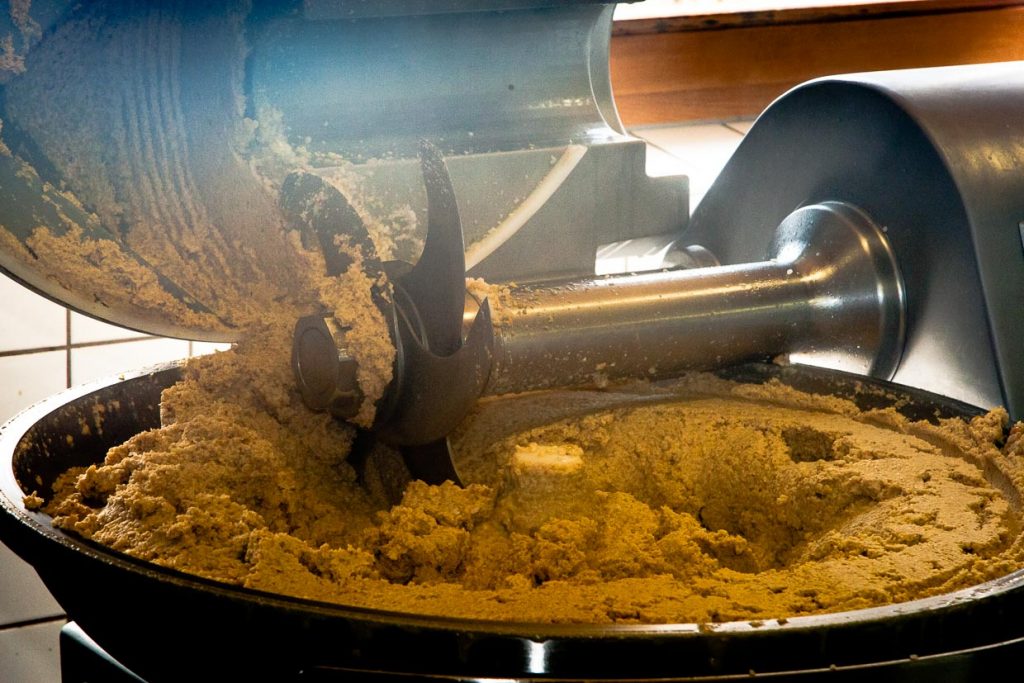
While the Japanese are very conservative and very attached to their traditions, Peter Koch sometimes experiments. The lupine miso, for example, is an invention from the Black Forest. Classic Japanese miso varieties are made from rice, soy or barley. The Japanese like the fermented taste of miso – Europeans tend not to. Peter Koch now has eight varieties in his range. From classic soy miso to his own creations such as lupine miso or miso mare with seaweed. He also works with chef friends to develop special varieties for star cuisine.
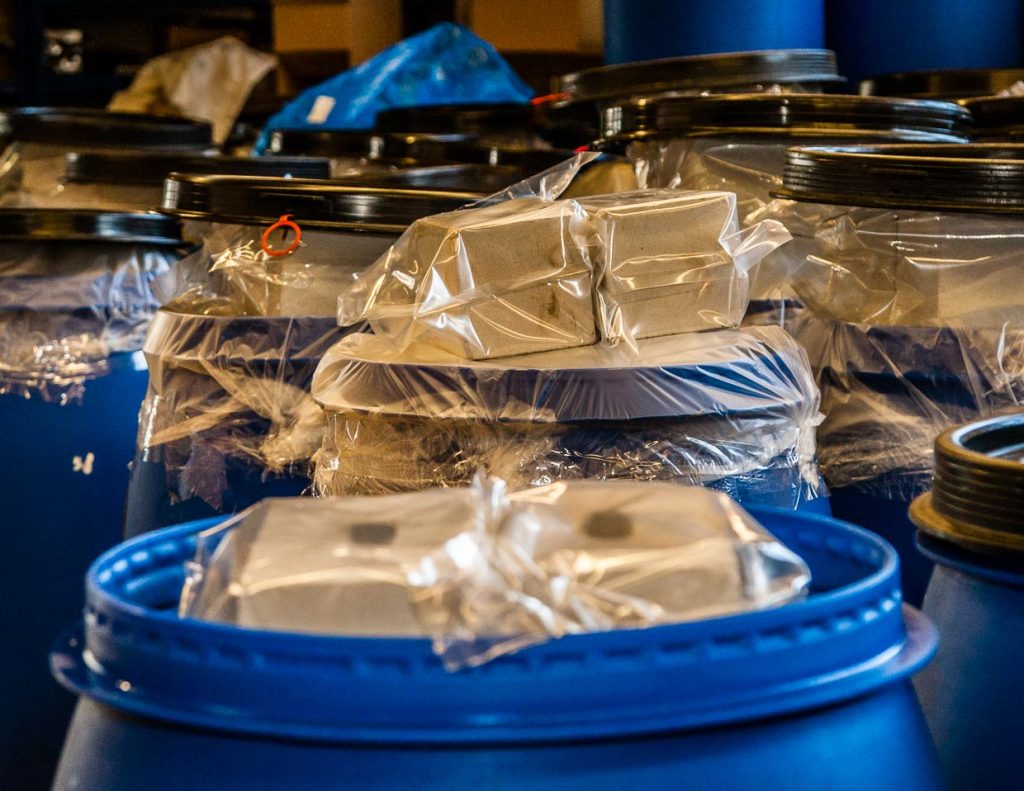
Miso forms umami
As if bones were boiled down for hours, miso also gives dishes that rounded and balanced taste. It has nothing to do with the aggressive glutamate. The task of miso takes place in the background. It should increase the flavor of an ingredient by 2-3 times, explains Koch. What olive oil is to the Italian and cream to the French, miso is to the Japanese. In Japanese restaurants and occasionally in top cuisine, the guest encounters miso soup with dashi, a fish stock.
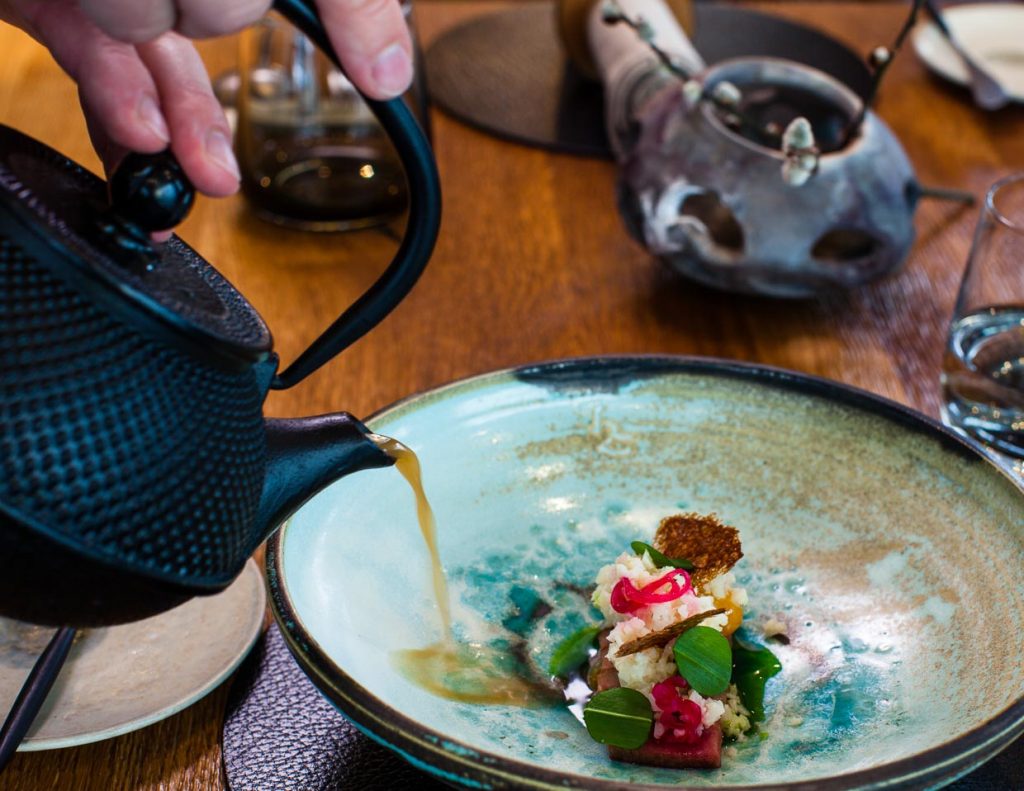
Miso in star cuisine
A few ingredients can be used to make a very complex product with many possible applications. Miso can be stirred into sauces and soups or used for marinades and salad dressings. Miso has the property of binding vinegar and oil. Michelin-starred chefs have also discovered miso for themselves. Many representatives of gourmet cuisine are inspired by Japanese cuisine. Now miso is growing on the doorstep, so to speak, for top German chefs. But top chefs would not turn to a local or regional product just for the sake of geographical proximity. Above all, the quality must be right. That this is the case is confirmed by more and more gourmet kitchens in the country. Nils Henkel, for example, cooks with Schwarzwald Miso. He is particularly enthusiastic about the aroma that miso adds to vegetable dishes. Perfect miso and then from the region are an unbeatable combination for him. Michelin-starred chef Daniel Fehrenbacher also cooks with Schwarzwald Miso at the Adler restaurant in Reichenbach, as does Paul Ivic from the well-known vegetarian restaurant Tian in Vienna.
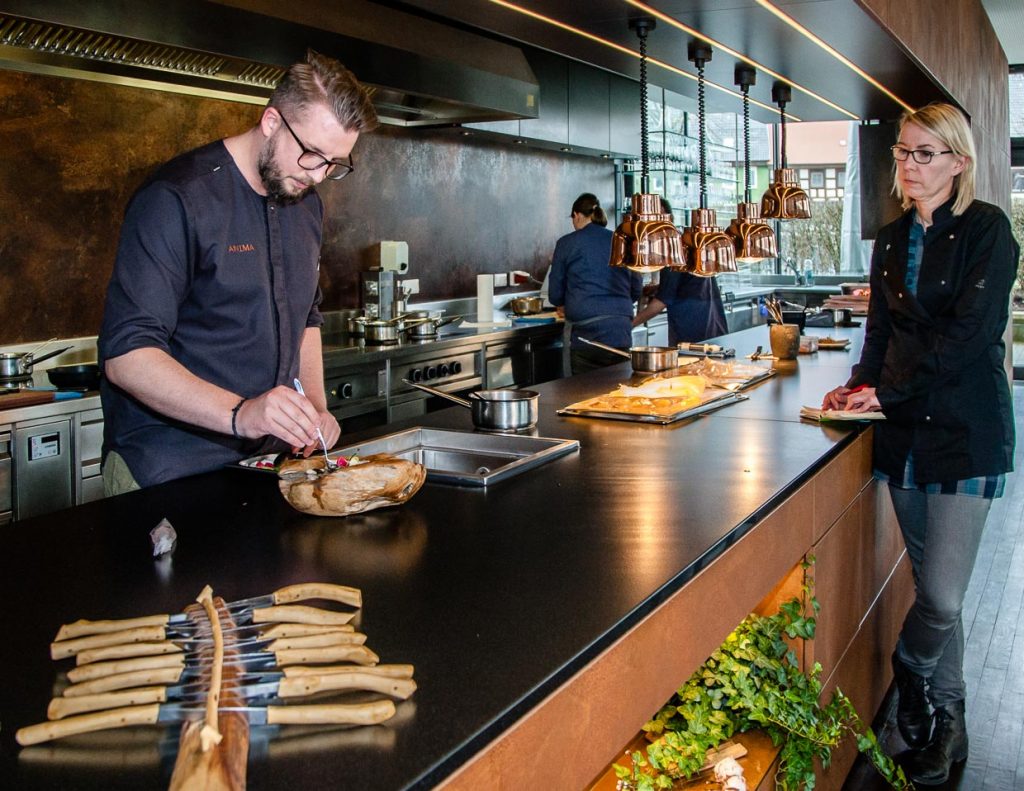
Michelin-starred chef Heiko Lacher from Tuttlingen working with miso
We visit Heiko Lacher in the restaurant Anima. Because here they also cook with Schwazrwald miso. Heiko Lacher was awarded his first Michelin star in November 2017. No sooner had the star risen than guests started coming to Tuttlingen from further afield. A star collector from Scotland immediately made his way to the Anima restaurant. A star brings up to 40 percent increase in sales. There is a new menu every month – which also pleases the regular customers. Heiko Lacher describes his cooking style as cosmopolitan but natural cuisine linked to the region. Much, he enthuses, is available right on the doorstep in the nature-loving Black Forest. Even the Christmas tree from the last festival still finds a use. Lacher is a fan of fermentation. He likes to build up stocks himself in the fall. For example, Black Forest fir needles or spruce tips are pickled, which later find their way into the kiwi ice cream.
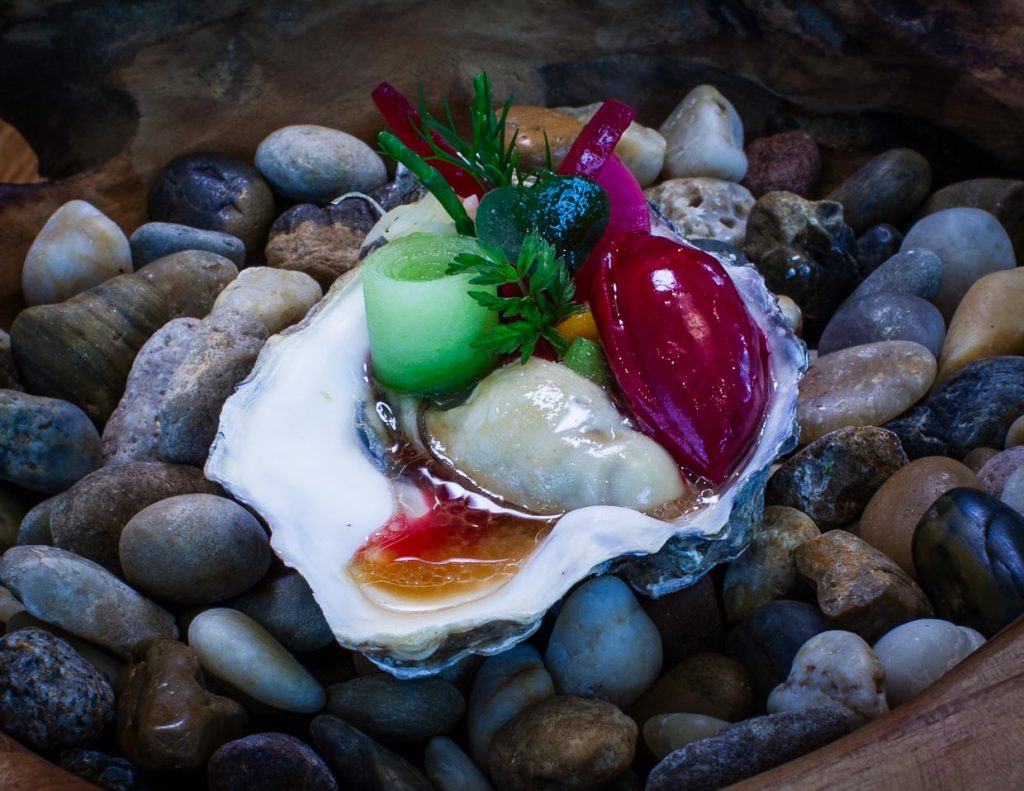
Heiko Lacher also likes to experiment with miso paste, transforming it into crumble, espuma, decoction, vinaigrette or chips. Peter Koch’s Black Forest Miso is perfectly balanced for Heiko Lacher. His favorite miso among all the varieties is the sweet and floral Lupine Miso, which works well in dressings and even desserts. We ask him to show the miso in use. For example, there’s the fine Gillardeau oyster. It is served at Anima as an amuse jule. The mineral oyster gets a miso vinaigrette. Combined with oyster gel and parsnip, which emphasizes the light and pure freshness of the oyster. Topped with seaweed, freshly pickled ginger and homegrown herbs.
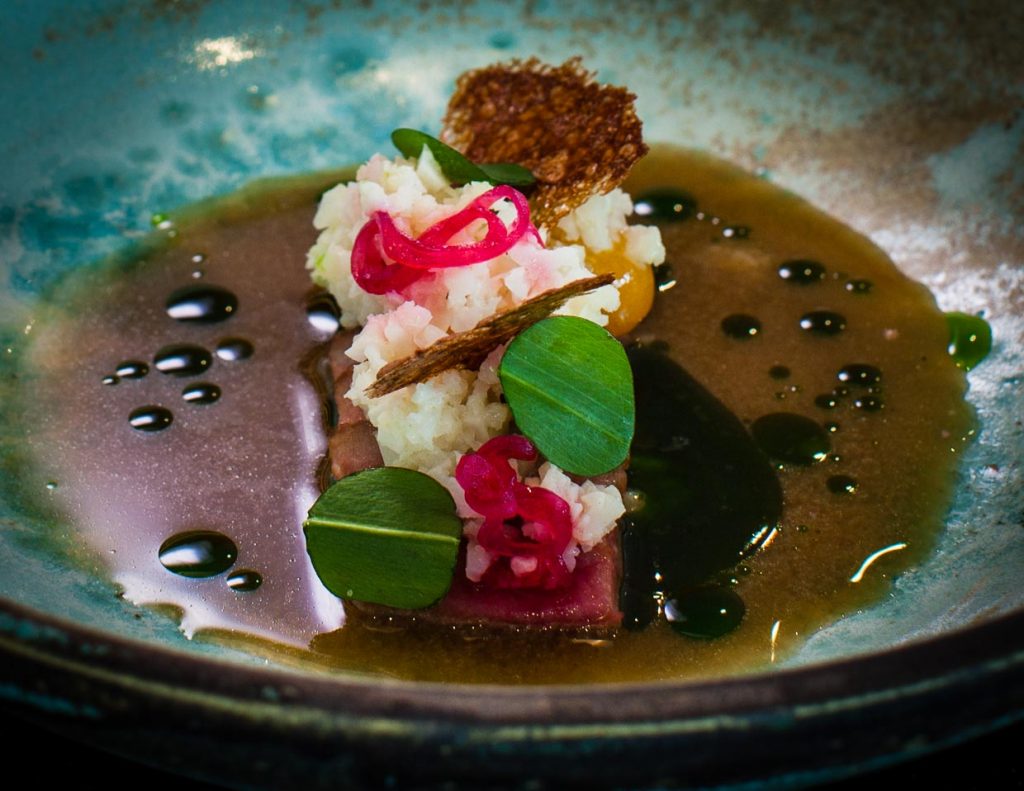
Pork belly is available at Restaurant Anima as an entrée or main course. The meat is combined with cauliflower couscous and pickled onions, homemade wild garlic oil and dressed with a spicy barley miso broth. The wild garlic oil gives the dish a wonderful spot-on spiciness, while the barley miso provides the rounded goodness, and the cauliflower couscous adds crunch. All in all, perfectly balanced with sweet and sour notes as well.
Claudia Zaltenbach and the standard work Miso
It’s about time we didn’t reduce Japanese cuisine to raw fish on cold rice. With miso pastes, it is possible to easily experiment with the elementary Japanese basic ingredient in your own kitchen as well. It can be used in many ways. In her book, Claudia Zaltenbach shows simple dishes such as miso nuts and snacks such as tofu lollies, describes her own creations and visits top chefs who work with miso. The book Miso – Recipes – Culture – People is a cookbook, travel book and non-fiction book all in one. Claudia Zaltenbach reports on her travels to miso producers in Japan and Korea, has food physicist Thomas Vilgis explain fermentation, introduces different types of miso, and talks to several top chefs about their use of miso. In her research on miso, Zaltenbach also discovers the miso maker from the Black Forest and devotes an extensive mention to Peter Koch and his Black Forest Miso.
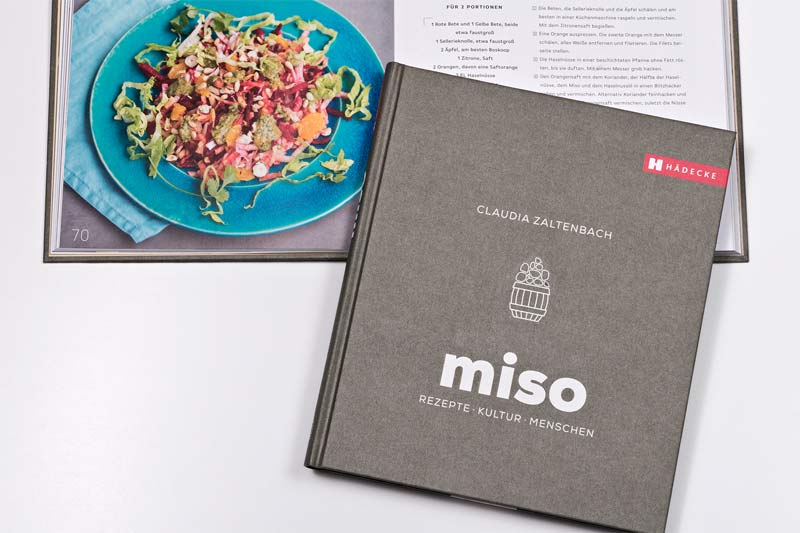
My favorite recipes from the “Miso – Recipe – Culture – People are the quickly made miso nuts. However, in the variation with cashews, walnuts, almonds and macadamia nuts. In fact, any nut is suitable for a bath in the miso paste and a short roasting in the oven. The recipe for asparagus salad with strawberry miso dressing is an excellent example of how miso is also suitable for fruity and sweet ingredients. In sauces and dressings, miso’s binding properties also stand out. A great example of absolute mouth-filling is the recipe “Mushrooms with Madeira Miso Cream”. This is an umami booster dish, because the taste of the mushrooms is so balanced and at the same time intense by cream and the miso that dissolves pleasingly in the sauce, that one deeply regrets the onset of the feeling of satiety.
Conclusion: with this book by Claudia Zaltenbach, you learn to cook with miso in a very playful way. From snacks and dips to complete dishes. From appetizers to desserts, there are plenty of suggestions to practice using miso. Definitely, this book brings you decidedly closer to the source of flavor.

